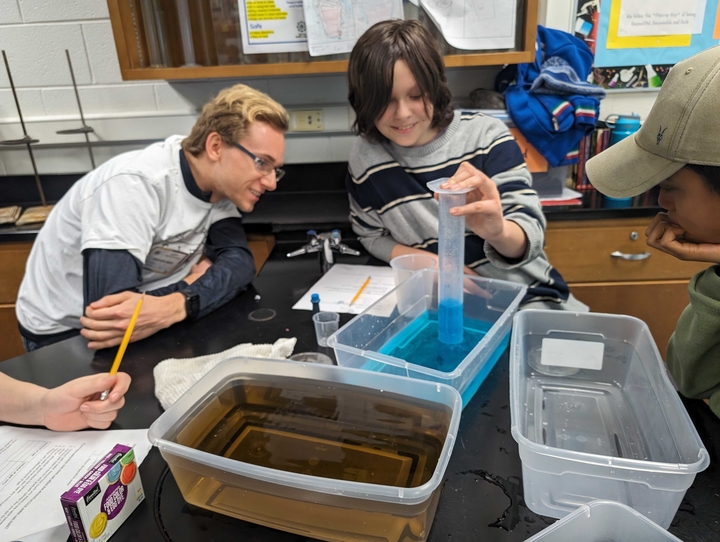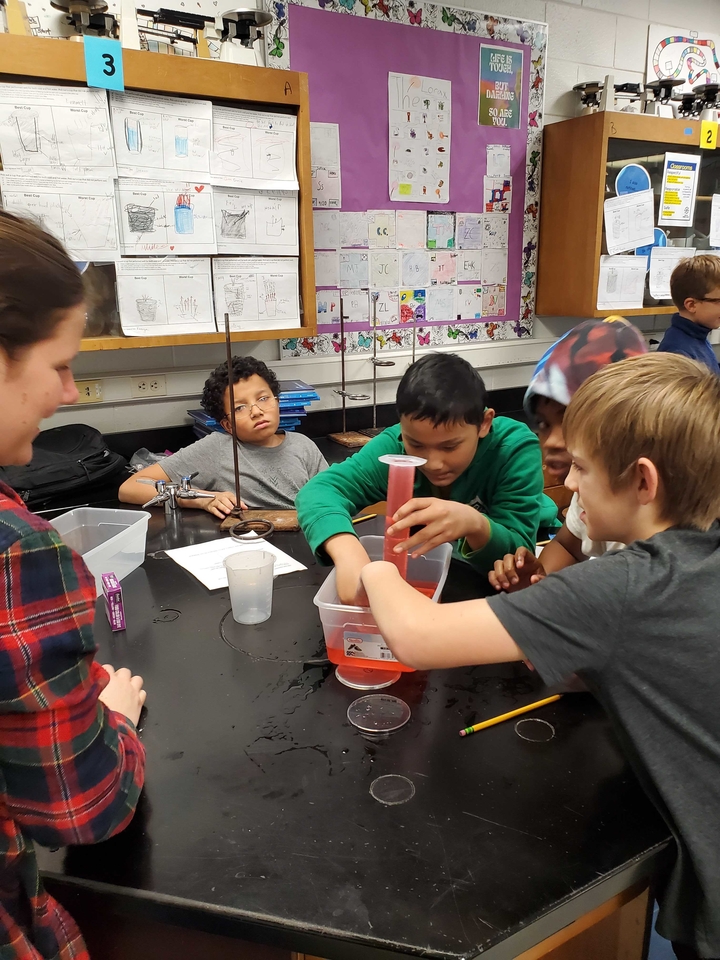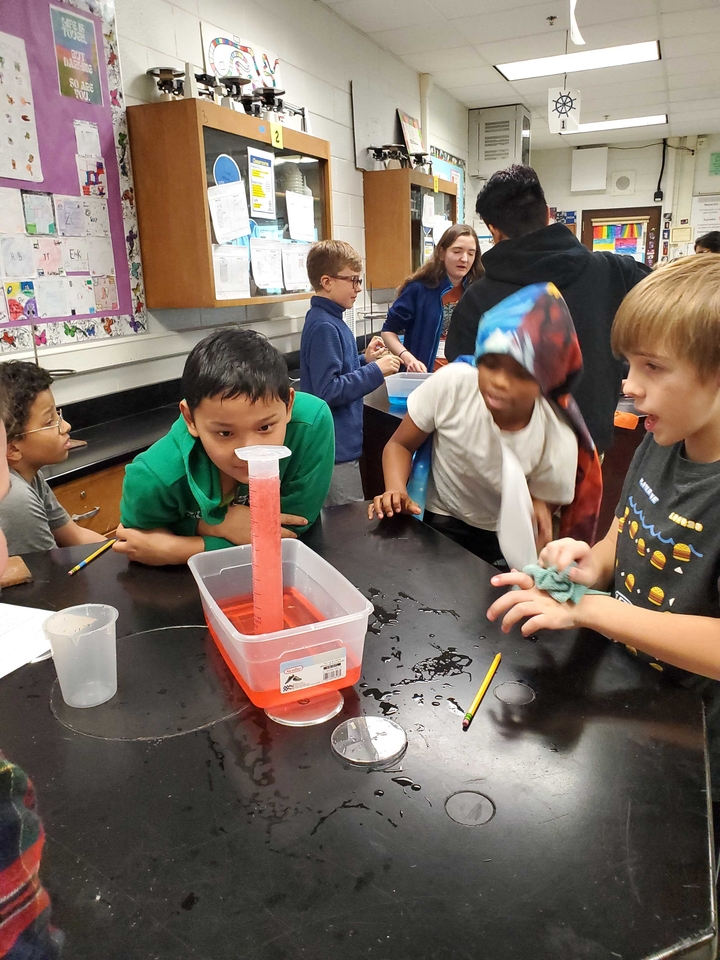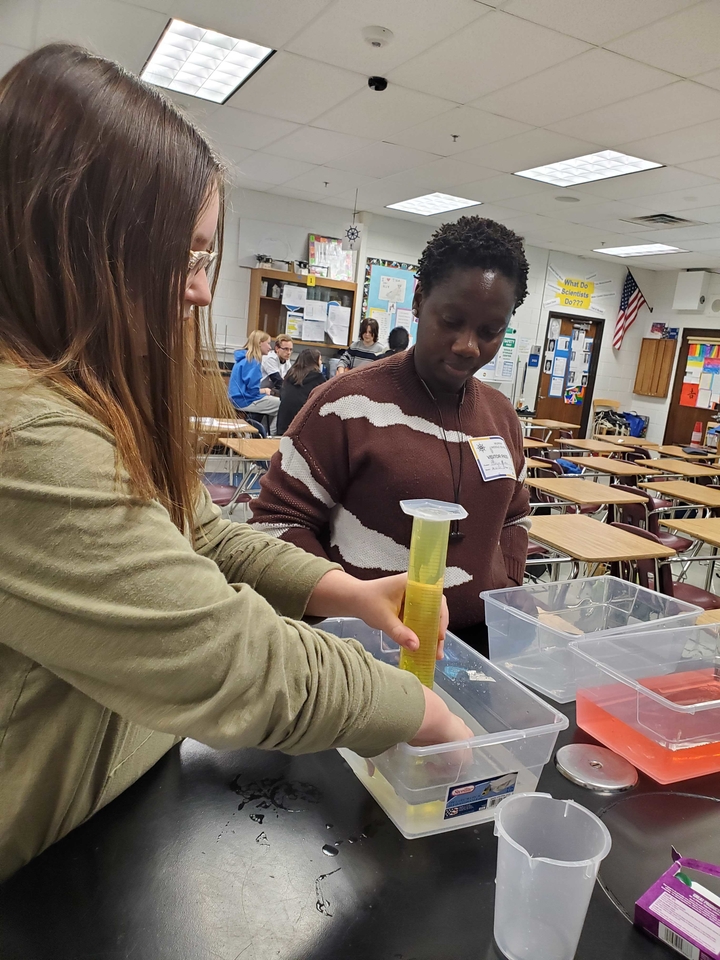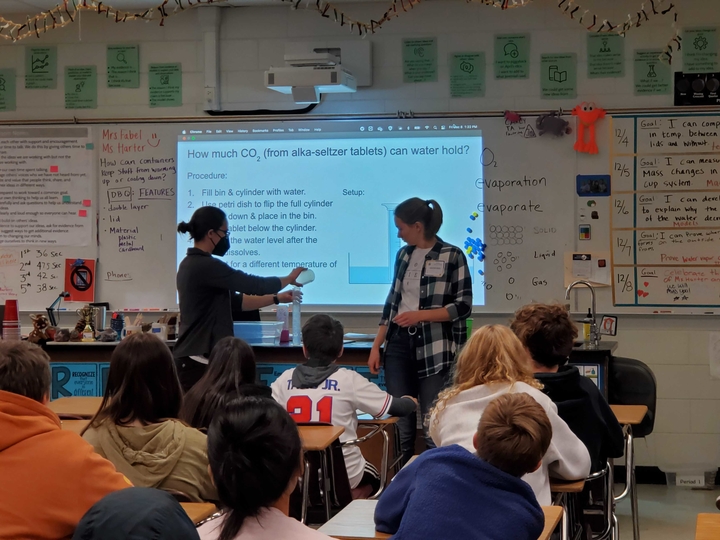December 2023 Visit on Friday, December 8, 2023
Experiment Leads: Emily Hoffmann & Kaylie Richard
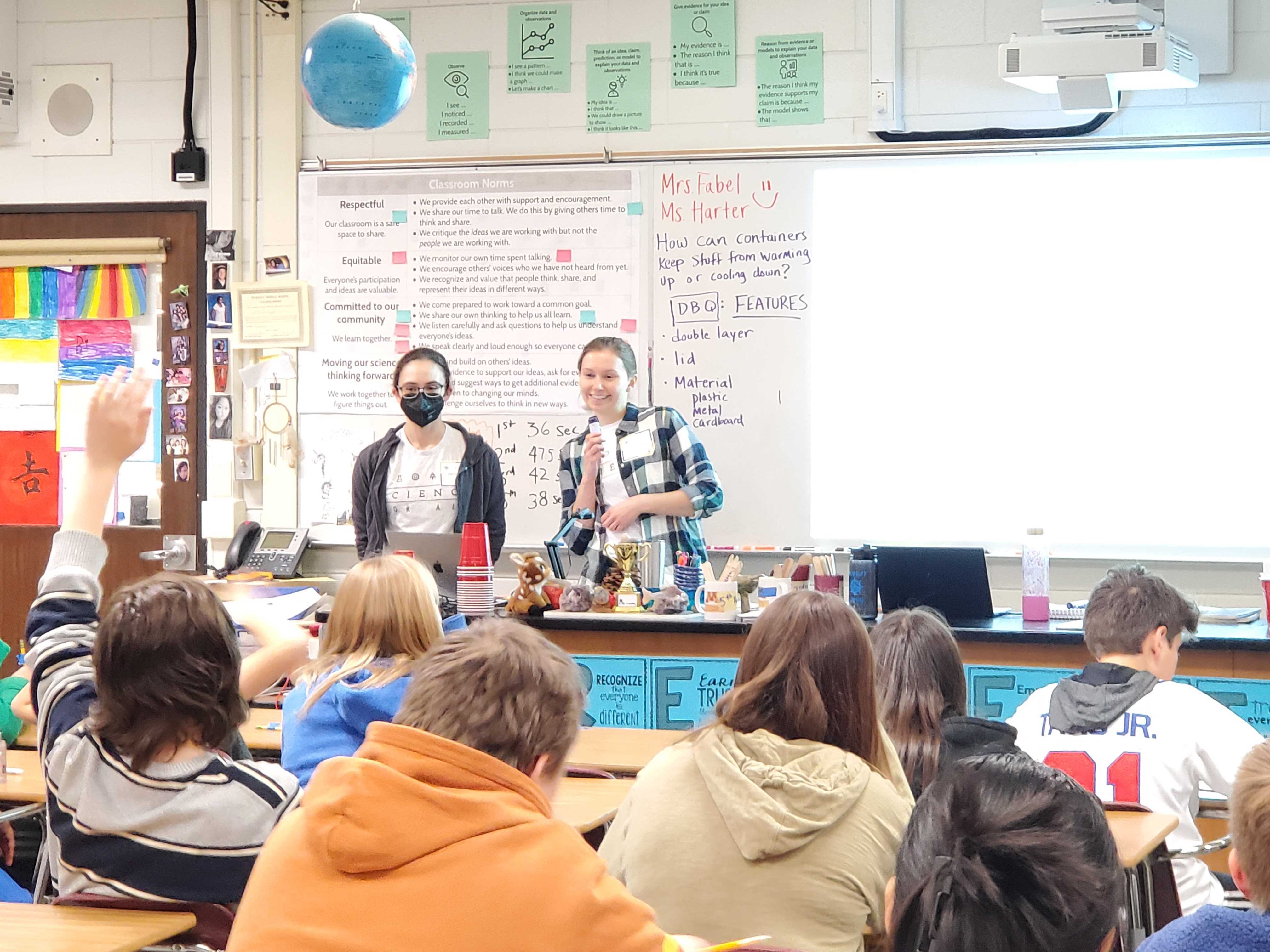
In our last visit of the Fall 2023 semester, Emily and Kaylie led an experiment investigating variables that impact CO2 solubility in water. To connect with the
class's environmental science theme, we started off the visit with a discussion of how CO2 is a vital part of the ecosystem and how it can be stored in “carbon
sinks” such as forests and the ocean. We then asked the students for their predictions of what would happen to the amount of CO2 stored in the ocean if
the ocean temperatures were to increase.
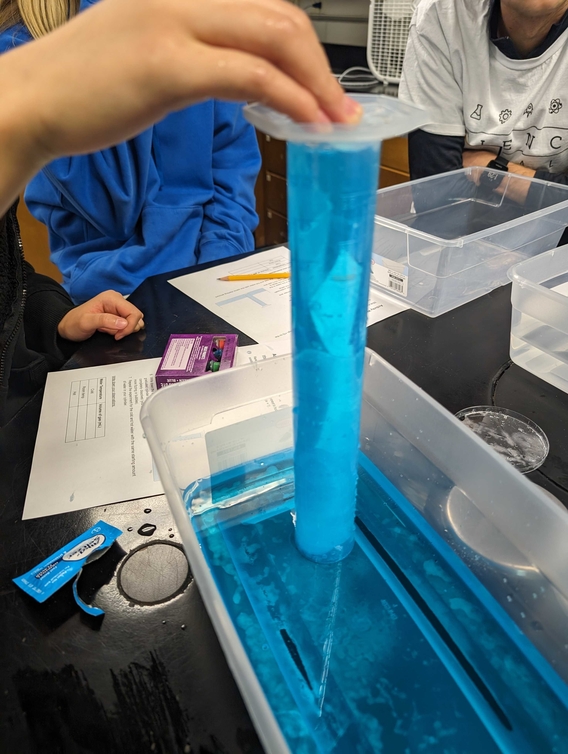
The students employed the scientific method to answer this question. After a discussion of our experimental and controlled variables, the students investigated how changing temperatures of water impacted how much CO2 the water could hold. The students placed Alka-Seltzer tablets underneath a graduated cylinder filled with water, then recorded how much CO2 from the fizzing tablets reached the top of the cylinder without being dissolved into the water. They repeated this experiment with three different water temperatures (cold, room temperature, and hot). They observed how the amount of CO2 dissolved in the water decreased as the temperature of the water increased.
The students then explored how changing the salinity of the water influenced the CO2 solubility. In their small groups, they measured how much CO2 salt water could hold and discussed how these results compared with the first half of the experiment. Lastly, small group discussions connected the results back to what increasing global temperatures could mean for the amount of atmospheric CO2. While the students expressed frustration over these broader implications for
global warming, they were able to practice valuable scientific skills such as making hypotheses, testing experimental variables, identifying controls, and drawing conclusions from their data.
